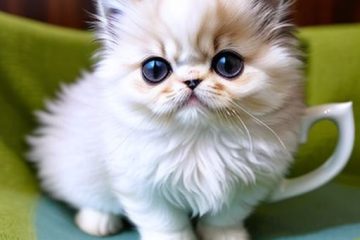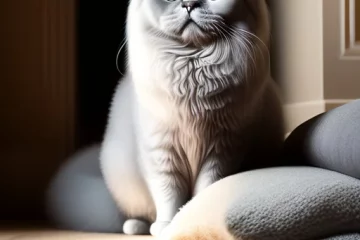Long-haired Persian cats are amazing pets that were brought to the western countries from Persia (Iran now) and Turkey by traders and adventurers.
These cats are so loved because of their wonderful beauty and amazing physical characteristics.
Persians are cute, loving, and friendly cats that build strong bonds with their humans.
They are also one of the oldest breeds of domesticated cats in the world.

To know more about this cat, read more the article below!
Physical Characteristics
The long-haired Persian cat is a cute pet that has a stocky body, medium size, and big head compared to his weight.
The head is round with wide small ears and an open face. The eyes are round and big with shiny colors.
His legs are thick, short, and powerful with round paws. His tail is short and feathery.
The coat is fluffy, long, and brilliant with a soft undercoat.
This cat appears in a wide range of color patterns.
Long-haired Persian cat’s Origin
The long-haired Persian cat was imported from Persian (Iran Nowadays) into Italy in the 17th century. They arrived in Britain in the 19th century.
Those Persian cats were a little bit different from the ones we know today. The old Persians had longer faces, larger ears, and rangy body.
Throughout the years, Persians have been changing because of selective breeding.
Today Persian cats are stocky with flat faces.
Long-haired Persian’personality Traits
Long-haired Persians are quiet, docile, and affectionate. They are so lazy compared to some short-haired breeds of cats.
They get on well with cats and dogs since they have a sweet and friendly character.
However, they are not active cats, they enjoy spending most of their time sitting on the sofa and showing their beauty.
Persians will frequently require your attention and care because they are loving and will develop a strong relationship with you.
They are also reserved around new visitors, till they get enough time to know them well.
Long-haired Persian cat’s Health Issues
The long-haired Persian cat is liable to many health issues although he is expected to live between 12 to 14 years.
Because of the flattened face, the Persian may almost experience jaw deformities which can cause dental problems and potential difficulties while eating and drinking.
This cat may also have breathing issues due to his small nostrils and soft palate.
Persian cats have a flat face which makes the tear ducts not follow the natural path; thus, the eyes wet the face continually which causes sores and skin rashes on the cat’s face.
The Persian facial shape also increases the possibility of getting eye diseases.
These cats may also suffer from polycystic kidney disease which is an inherited disorder in which cysts develop in the tissue of the cat kidney. These cysts may overwhelm natural kidney tissue and mostly lead to potential kidney failure.
Persians are also likely to get Hypertrophic cardiomyopathy (HCM) which is a condition that causes the muscular walls of the cat’s heart to become thick, which decreases the heart’s efficiency.
However, frequent care and the right choice of healthy nutritional elements will surely avoid a lot of health problems your long-haired Perian may face.
Nutrition
When it comes to nutrition, cats are different from each other. Every cat has his own preferences.
But, do not forget that cats are carnivores and that they require healthy nutrition for having good health.
The quantity of food to give your Persian will surely depend on his health, age, lifestyle, and activity.
So, small, growing cats should have more quantity than senior less active cats.
However, It’s worth mentioning that Persians need a balanced diet that contains a mixture of dry and wet food. It’s better to feed your cat wet food in the morning and evening.
You need also to make sure a bowl of fresh dry food and clean water are available at all times.
Furthermore, It’s essential to give your Persian cat nutritional elements that consist of protein since it is so vital for your cat’s health.
Protein exists in different meats like beef, chicken, eggs, turkey, rabbit, pork, and fish.
Grooming your Long-haired Persian
The long-haired Persian cat needs frequent grooming to maintain his thick, long coat without any knots or mats.
You should also take care of your Persian’eyes since they require daily cleaning.
Claws should be clipped frequently. The best time to do so is before you bathe your cat.
Unlike other cats, Persians need frequent bathing to prevent grit, oil and to get rid of mats and tangles.
You may also look for a professional groomer to help take care of your kitty even once in a while.
Children and Dogs
The long-haired Persian cat is appropriate for families with kids and other well-trained dogs. So he loves being with children if they treated him properly.
But you need to supervise your children and show them how to play with the cat carefully in order to avoid mistreatment.
If you want to bring a dog home, you will realize that they will easily get on well with each other. But make sure your new dog is friendly towards cats so as to avoid unnecessary problems.
Conclusion
long-haired Persians are really sweet and smart cats that deserve our attention and care. They are special pets that have many characteristics that stand out.
Not only are they cute, but they are also friendly, social, and affectionate.
They will always lay on your laps which make them absolutely wonderful cats.


